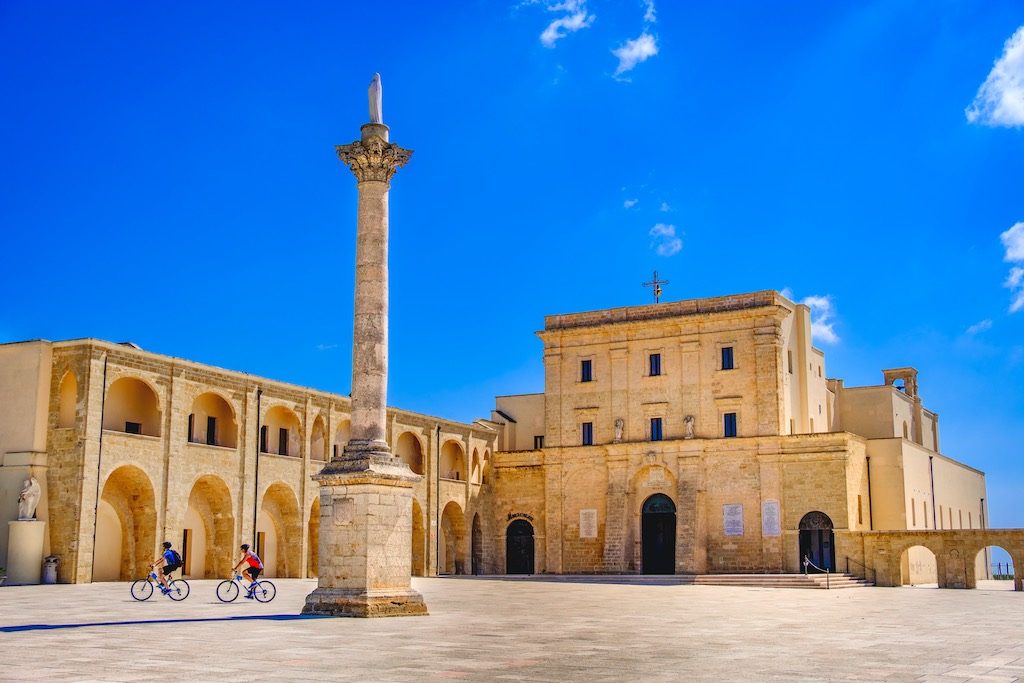The end of the Heel of Italy
A vacation in Salento must end with a stop in Santa Maria di Leuca: it is precisely at the extremity of Puglia, as it was the culmination of a sensorial experience made of ancient tastes, landscapes, ancestral traditions and history.
The symbols of Santa Maria di Leuca
It is often said that Santa Maria di Leuca is in the meeting point of the two seas, Adriatic and Ionian: actually, this fusion takes place further north, offshore of the lighthouse of Punta Palascia, a few steps from Otranto. But that does not mean a loss of the charm of Santa Maria di Leuca, called “de finibus terrae” by the Romans because it was born where the land gives way to the blue sea.
The symbol of this town in Salento is surely the Shrine of Santa Maria de Finibus Terrae, built where in the past a temple dedicated to Minerva stood: nowadays, of that pagan site, only an altar is still preserved in the church, with a beautiful painting by Jacopo Palma il Giovane portraying the Virgin Mary with the Child, and an organ of 1885.
A few steps from the very bright churchyard there is a big stone cross in memory of the passage of Saint Peter during its journey to Rome.
The Shrine, flanked by the white lighthouse realized in 1873, dominates the harbour of Santa Maria di Leuca from a hill, connected to the religious building by a monumental waterfall, that is the end point of the Apulian Aqueduct. On special occasions, the waterfall is enlightened in such a suggestive way that it offers one of the most beautiful panoramas of Leuca.


Santa Maria di Leuca: between history and legend
At the foot of the Monumental Waterfall there is the sculpture “Trittico della Trascendenza”: it portrays the legend of Leucasia, related to the myth of the birth of the town. Leucasia was a mermaid who fell head over heels with the shepherd Melisso. But the heart of the young man was only for Aristula: that arose the wrath of the mermaid, who brought down a mortal storm on the two lovers.
The bodies of the young couple were thrown in the sea and, because of the gods’ pity, were turned into rocks placed one in front of the other: today they are identified with the rocky capes of Punta Ristola and Punta Meliso, embracing Santa Maria di Leuca.
The name of the town comes from this dramatic tale, leukos: actually, this Greek term seems to be used by the Hellenic sailors when they spot this very bright land for the first time (leukos means, indeed, white).
Penetrating in the town, you will have the possibility to admire the various historic dwellings built from the XIX century in different styles: Pompeian, Liberty, Moresque, Gothic and Medieval. Among these, Villa Meridiana, easily recognizable for its façade decorated with the elegant sundial, Villa Episcopo with its oriental style, Villa Mellacqua with its fairy aspect and Villa Pia with the walls decorated with battlements stand out.









